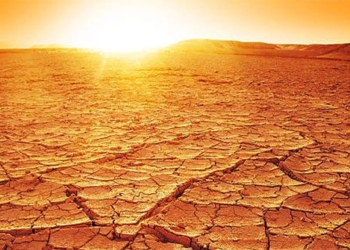The scene across Western Europe last weekend saw crowds flocking to parks and rivers, seeking relief from the sweltering heat.
According to Reuters, Spain is experiencing an unprecedented early summer heatwave, with temperatures expected to soar between 40-42 degrees Celsius in many regions of the Northeast and North, as reported by the national weather agency AEMET. In Zaragoza on June 18, the temperature at 4 PM reached 40.9 degrees Celsius.
In France, meteorologists described the situation as “truly unusual”, with temperatures peaking at 43 degrees Celsius on June 18. Similarly, parts of Germany saw temperatures hitting 38 degrees Celsius, while the UK recorded its hottest day of the year (June 17) with temperatures reaching 30 degrees Celsius in the early afternoon.
The prolonged dry weather, high temperatures, and winds have prompted officials in several countries to issue warnings about the risk of wildfires along the western Mediterranean region. Spain faces a “extremely dangerous” risk, particularly in Zamora, near the border with Portugal, the Rhône Valley in France, and the regions of Sardinia and Sicily in Italy.
The AP news agency reported that the European Union (EU) has activated “alert mode” for 12 firefighting planes and one helicopter to assist affected countries.

People gather waiting for the tram while the outdoor thermometer reads 40 degrees Celsius in Zaragoza, Spain. (Photo: REUTERS)
Sitting in the shade outside the cathedral in Zaragoza, Marisa Gutierrez told Reuters: “The hot wind feels like it’s blowing from the desert. This time of year, temperatures are usually pleasant, not this hot.”
Experts indicate that the early onset of heatwaves is a sign of climate change causing extreme temperatures that typically occur in July and August to happen in June.
Across the ocean, more than 25 million people in over 12 states in the United States received heat warnings starting June 18. Many areas had just recently escaped another record heatwave a week prior.
According to CNN, from Lincoln, Nebraska, to Fargo, North Dakota, temperatures are expected to exceed 37.8 degrees Celsius this weekend. A new heat dome is currently covering the Northern Plains and will gradually move eastward, affecting the Midwest and Southern regions of the U.S., creating yet another week of record high temperatures.
This year’s record high temperatures have been noted by scientists in both the Northern and Southern poles since March, leading them to suspect there might be an error in their readings.
While temperatures at the Vostok Station near Antarctica exceeded the previous record by more than 15 degrees Celsius, the Arctic was warmer by 3 degrees Celsius compared to long-term averages, according to The Guardian. Experts emphasize that heatwaves at one pole are a warning, but occurrences at both poles could signal the onset of a climate disaster.
Since then, weather stations worldwide have continuously recorded high temperatures—May saw 49 degrees Celsius in New Delhi, India, and Madrid, Spain, surpassed 40 degrees Celsius on June 13.
Scientists also point out that human activities increase the risk of extreme heat. The poor are the most affected, as they often work outdoors or in factories and return home to houses without air conditioning.
However, the very act of using air conditioning creates a “vicious cycle of death”: The more it is used, the more energy is consumed, threatening to spike greenhouse gas emissions, while only urgent reductions in greenhouse gases can prevent climate chaos.




















































